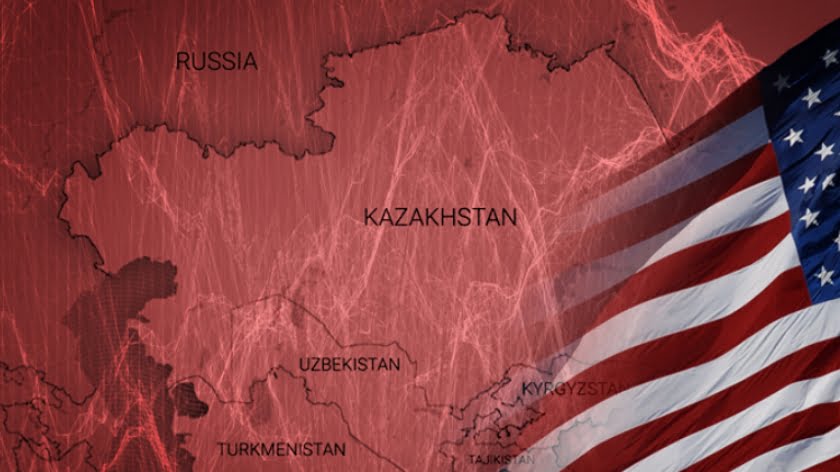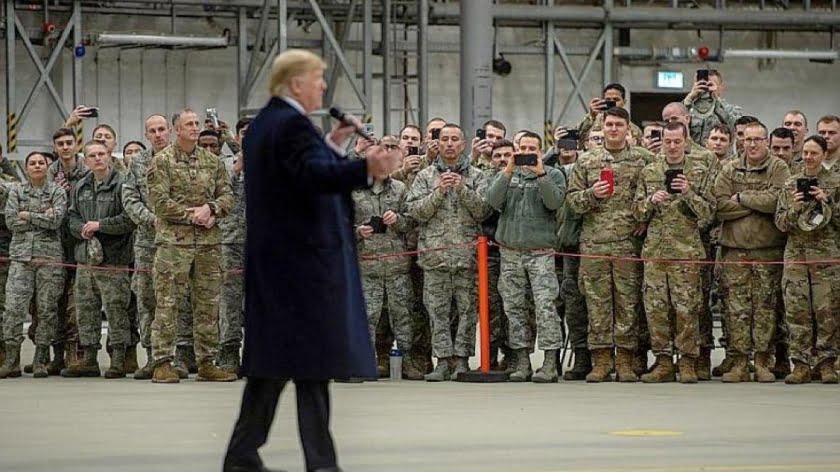US Intensifies Struggle Over Central Asia
The rich natural resources of Central Asia have long been stirring the appetite of foreign nations, especially the US, which has recently intensified its activity in the region. Washington’s primary goal is to sideline Russia, as well as China, its main rival, in order to secure a monopoly in Central Asia, not only over the economic relations in the region, but over the military and political spheres as well.
Senior US officials are frequent guests in Central Asia. This year, Washington initiated a significant rotation of US ambassadors in Central Asian countries. And the latest diplomatic appointments of the White House draw attention to the fact that most of the new ambassadors are people with significant experience in military strategy and in staging coups d’états. These actions from Washington’s side indicate that the United States strives for secure long-term political and military influence in Central Asia, which is of crucial importance from a geopolitical point of view. The US expects that this will put both Russia and Iran into a difficult position, making it much easier to exert pressure on these countries.
Having maintained military presence in Afghanistan, the United States continues to actively strengthen its position in Central Asia, all but openly demonstrating that if the authorities of the Central Asian nations remain incompliant, they will face serious consequences. In this regard, it isn’t surprising that the US launched an active propaganda campaign, declaring that their departure from the region would entail a surge of extremism and terrorism. The US claims that only the American ‘military umbrella’ can rid the region of these threats. It seems like a warning to the leaderships of the nations: they must either agree to keep US military presence or bear the unpleasant aftermath.
It’s no secret that Washington maintains secret contacts with the Afghan opposition, in particular, with the Taliban (banned in the Russian Federation) and a number of field commanders of other forces. Recently, the USA’ contacts with these groups has become more overt. When necessary, militant units can be pitted against the Central Asian republics bordering Afghanistan – Uzbekistan, Tajikistan, Turkmenistan. This tactic has been tested a long time ago. For example, the East Turkestan Islamic Movement, listed as a terrorist organization by both the Western powers and the Russian Federation, is actively working against China in the Xinjiang Uyghur Autonomous Region and, according to a number of sources, is supported by the US.
These conditions created by the US are favorable for strengthening its military presence in the region, and the country has noticeably increased activities on numerous regional ‘security’ programs. As a result, ever since 2007, the US’ financial assistance for these programs has been exceeding the amount contributed to the region for economic needs. These tendencies also show the USA’s heightened interest in obtaining guarantees of access to the most important regional sites ‘in order to preserve them’, which is done under the guise of a ‘struggle for security.’
Paradoxically, Washington’s ‘assistance’, aimed at training and equipping personnel operating in Central Asia in the field of security and designed to stop the large flow of opiates from Afghanistan, hasn’t reduced the drug trade conducted through this region in the slightest. Then what exactly are the funding and the programs meant to accomplish?
The answer is obvious. Washington’s help in ensuring security in Central Asia is payment for the continued US presence in the Central Asian nations and for the confrontation with Russian and Chinese influence in the region.
Gone is the ‘favor for a favor’ approach used since 2001, when assistance was provided in exchange for access to the countries of the region. In recent years, Washington been focusing not only on long-standing problems in the field of regional security, but also on certain areas of mutual interests that the US hopes to use for its own goals in the future.
One of the strategies developed by the USA, proven effective in furthering desired long-term institutional changes, consists of the active involvement of members of the Central Asian army and special services in educational, training and social events held on US grounds. The USA hopes that this will increase the countries’ ‘understanding’ of Western institutions and promote respect for them. As a result of these US-based joint training and educational courses, more personal ties have emerged between the USA and Central Asian armed forces and security services. This has also become a potential vital instrument of US influence on the region.
Despite Washington’s recent declarations and documents clearly expressing its desire to make Kazakhstan its main foothold in the post-Soviet area of Central Asia, the US pays special attention to strengthening joint programs with Tajikistan, Uzbekistan and Kyrgyzstan.
Washington’s efforts in Central Asia reflect Secretary of State Mike Pompeo’s stance expressed during Kazakhstan’s Foreign Minister Mukhtar Tleuberdi’s recent visit to the US. Pompeo spoke of Kazakhstan’s ‘leadership in Central Asia’ and the special emphasis Washington places on Nur-Sultan as a ‘key partner in maintaining regional security.’
The fact that this isn’t a tribute to political correctness is confirmed by the US Department of State’s official website in its report on a briefing on US-Central Asian relations, where a senior official of the US Foreign Service promised to unveil ‘the new Central Asian strategy of Donald Trump’s administration’ in the near future. During the briefing, US interest in Kazakhstan and Uzbekistan was made quite evident, its goal being to form a pro-American axis in Central Asia by preventing both the Russian plans for Kazakhstan’s involvement in Eurasian integration and the Chinese Belt and Road Initiative, which is set to pass through this region. At the same time, the US wishes to use Central Asian ethnic minorities to influence the situation in Afghanistan. Here, the United States is conducting a dialogue with the Taliban (banned in the Russian Federation), which is assisting the US in diminishing the influence of Daesh (banned in the Russian Federation). Alternatively, if this doesn’t work out, the US will turn the post-Soviet area of Central Asia into the center of its subversive influence on Russia and China to prevent their collaboration, exporting Afghan instability to the region.
Concerning countermeasures against China’s influence on the region, throughout the whole of 2019 the USA has insistently demanded the post-Soviet republics of Central Asia to provide active support to the fugitives from the Xinjiang Uygur Autonomous Region of the PRC. This clashed these countries’ governments, Kazakhstan’s in particular, with Chinese diplomacy, which does not tolerate compromises regarding the preservation and restoration of its territorial integrity. The plan is to use ethnic Kazakhs and representatives of other Central Asian peoples living in the XUAR as valuable assets for this process.
Washington’s aim to significantly renew and strengthen its policy in Central Asia, especially on post-Soviet states, is also confirmed by the recent 130-page report of the RAND Corporation – ‘A Consensus Proposal for a Revised Regional Order in Post-Soviet Europe and Eurasia’, compiled with the support of the Carnegie Corporation of New York, a non-governmental foundation. The report focuses on the development of recommendations for radical changes in a number of Eurasian countries, for which the authors introduced the term ‘in-between states,’ meaning states ‘physically located between Russia and the West.’ It is influence over these nations hat is the object of the ongoing struggle between the USA and Russia.
By Vladimir Platov
Source: New Eastern Outlook







